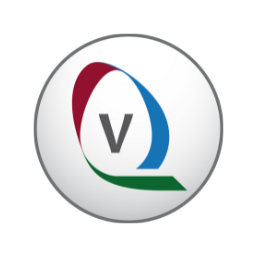The Netherlands - ILVO Measurement Report. Determination of ammonia, odour, particulate matter and methane emissions from a broiler breeder house equipped with Agro Supply ECO Air Care units. Location: Greenfarm of Ben Beerens in Hoogeloon, the Netherlands.
Introduction
The measurement report, prepared in the framework of the SBV scheme, describes the results of the project 'ECO Air Care in broiler parent animals' (SBV21N2501). ILVO conducted six measurement periods between 27 February 2023 and 25 January 2024 in a broiler parent house in Hoogeloon, equipped with ECO Air Care units. The report focuses on emissions of ammonia, odour, particulate matter and methane, and the effectiveness of the ECO Air Care units in reducing these emissions.
Description of the stable
The barn in Hoogeloon features a housing system consisting of floor housing with two rows of laying nests and slatted floors. The ventilation is fully controlled by the ECO Air Care system.
Working principle of the ECO Air Care system
The ECO Air Care system combines air treatment with heat exchangers and particulate filters. It was expected that by fully ventilating via heat exchangers, ventilation can be set higher in cold periods, reducing risks of wet litter. In addition, indirect adiabatic cooling is applied, which prevents additional moisture in the stall air.
In the comprehensive ILVO report, the full descriptions of the measurement methods on ammonia, odour, particulate matter, methane, ventilation flow rate, carbon dioxide, relative humidity and temperature, as well as dry matter content of the manure and litter layer, wash and slurry water and production data can be read, as well as the findings on those specific issues.
Measurement strategy
During a year, six measurement days were scheduled to measure ammonia, odour, particulate matter (PM10) and methane. The measurements were carried out according to protocols for emission measurements in livestock farming. By comparing the air before and after the units, the removal efficiency of the ECO Air Care units was determined.
Conclusions
The average removal efficiencies of the ECO Air Care units are as follows:
- Ammonia: 92.4%
- Fine dust: 55.1%
- Odour: 2.2% (not statistically significant)
- Methane: 0.3%
The calculated emissions per animal per year are:
- Ammonia: 0.034 kg
- Fine dust: 53 g
- Odour: 0.19 OUE/s
- Methane: 27 g
This ILVO report again shows that the ECO Air Care system demonstrated a high removal efficiency for ammonia and fine dust, contributing to a more sustainable and environmentally friendly poultry industry. Furthermore, it is striking that the odour emission in the house is a friction (only 20%) of the odour emission is released by regularly kept broiler parent birds, thus a very strong reduction 'at source'.
Want to know more about how the ECO Air Care system works? Watch the animation below!
Better experience with sound on
Or read the Dutch scientific article 'Validation methods for the ammonia removal of an air scrubber on a poultry house using the acid use and the process water nitrogen balance' written by Victor van Wagenberg, P.W.G. Groot Koerkamp.












.png?width=160&height=132&name=Egg%20packers%20-%20Vencomatic%20Group%20(2).png)
.png?width=160&height=132&name=Meggsius%20Select%20-%20Vencomatic%20Group%20(2).png)









/Meggsius%20(7)%20banner_web.jpg?width=240&name=Meggsius%20(7)%20banner_web.jpg)


